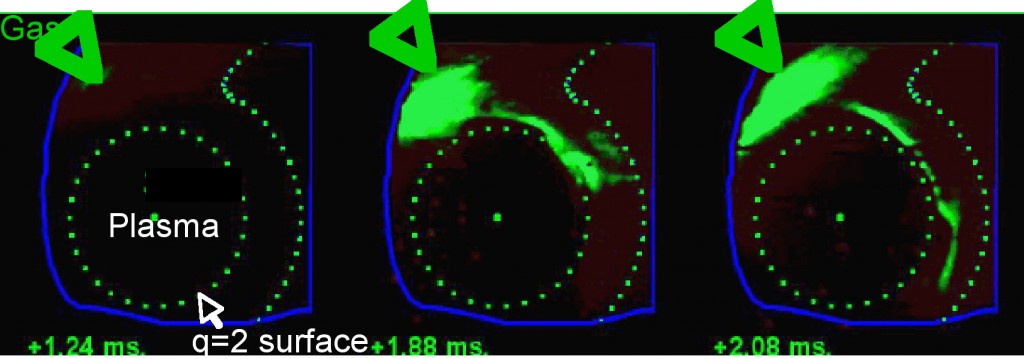
Figure shows the penetration of gas injected from top left corner in TEXTOR (Julich, Germany). The plasma is cooled (seen by bright light due to radiation from the injected impurity gas) up to the surface with safety factor q=2 before the collapse occurs


